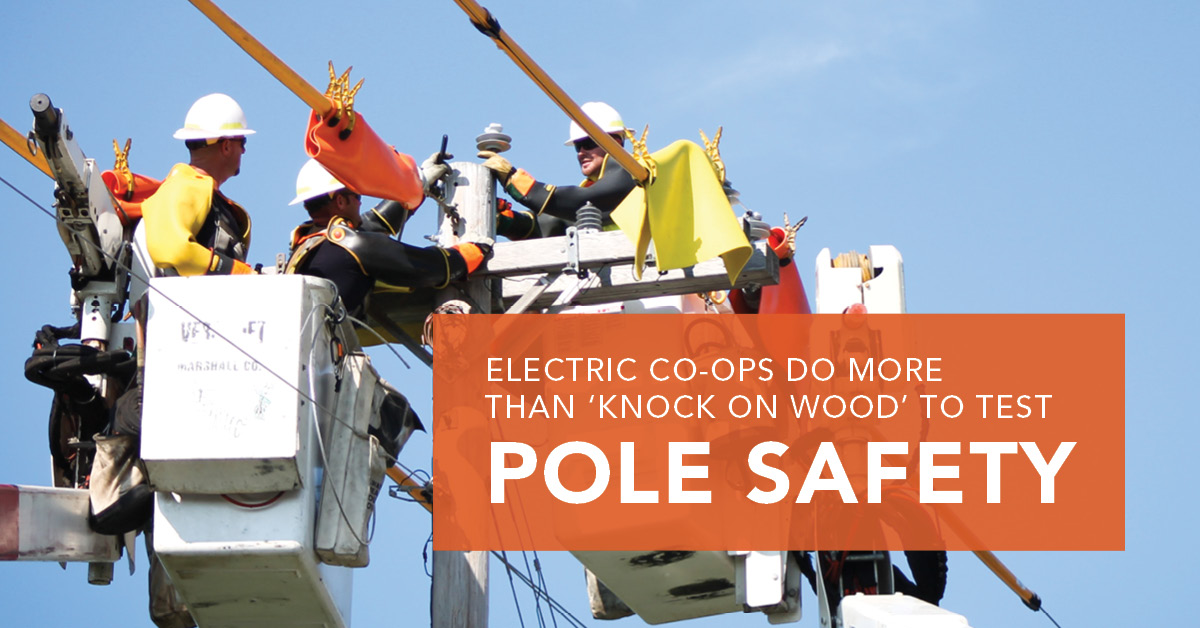
Trees add immeasurable value to your property but maintaining them comes with a cost. They need pruning, sometimes heavy trimming, or removal.
“We know hiring professionals to do some of these tasks goes against that independent streak some of our consumers have,” said John Gasstrom, CEO of Indiana Electric Cooperatives. “But trimming and removing trees can be dangerous and even deadly. Before attempting any work yourself, please understand the dangers.”
The most common types of serious tree trimming accidents are:
- Electrocution. You can be seriously injured or killed if you come into contact with an electric line. It’s easy to misjudge the height of a tree or length of a branch. If there’s a chance power lines might be involved at all, always call your electric utility first and its experts will come out and advise you. Even when you think there’s room, if the wind blows a limb into a power line as you’re trimming it, you can be electrocuted.
- Falling. You can be seriously injured or killed if you fall from a tree. Pruning branches or trimming out dead or overgrown limbs sometimes requires getting into the tree. Always make sure you are using appropriate safety harnesses and ropes. Before climbing, inspect the tree to make sure no power lines run through or near the tree.
- Being struck. You can be seriously injured or killed if you are struck by falling trees or limbs. Cutting large limbs and trees can be tricky. Improper cutting can cause the tree to fall where you hadn’t planned. Always have two escape routes planned ahead of time in case the tree starts going the wrong way.
A falling tree hits the ground with great force. Branches and limbs crack, bounce, snap and recoil, especially if dead wood is present. Snapped branches can be flung surprisingly far in multiple directions. Tie off limbs to be cut and lower them to the ground with rope. Never turn your back to a falling tree, and always wear a hard hat when trimming and cutting.
- Overestimating. You can be seriously injured or killed if you overestimate your abilities.
“The most important safety reminder for any project is: Don’t get in over your head,” noted Gasstrom. “If your survival instinct is debating with your frugal independent spirit about the scope or trickiness of a cut, call a professional tree-trimming service to handle the job. The money you think you’ll save doing it yourself cannot buy back your health.”
Words of warning
Manufacturers put important safety messages on each piece of equipment and in the operator’s manual. Before using equipment for the first time, you should read and understand all safety messages.
Many safety messages use the words “caution,” “warning” and “danger” to get your attention. Each of these signs will have a written message, and perhaps a picture, about a possibly unsafe condition.
- CAUTION means you need to be careful. Follow the directions on the sign or you could get hurt.
- WARNING is more serious and means you need to follow the directions on the sign or you could be badly hurt or killed.
- DANGER is the most serious safety message. If you don’t follow the directions, you will be seriously injured or killed.
Beware electrical hazards when trimming or cutting trees
Before beginning any tree trimming or cutting project, survey the area where you are cutting for overhead power lines. If there are any in the area, contact your local electric cooperative. If the area is within the right-of-way or a dead or dying tree can fall and threaten a power line, the co-op most likely will have the tree trimmed or cut for you to protect its power line.
If you plan on trimming or cutting trees yourself, here are some safety concerns you must keep in mind:
- Use extreme caution when working around electrical lines. Never place yourself or your equipment within 10 feet of a power line.
- Electric shock or electrocution will occur when you physically touch the line with any part of your body or clothing.
- Electric shock or electrocution will occur when your body, clothing or equipment touch any material that is in contact with a power line. Pay attention to the wind, for instance. If you are cutting a branch and the wind blows it into a nearby power line, you can be electrocuted.
- Electric shock or electrocution can occur if you or someone you are with cuts a tree or limb that falls into a power line and dislodges it from the pole. The ground where the line falls can become electrified and electrocute anyone nearby.





